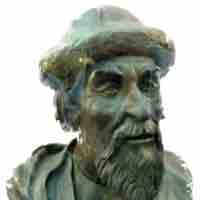Chapter 12
The Development of Russia
By Boundless
Rurik was a Varangian chieftain who established the first ruling dynasty in Russian history called the Rurik Dynasty in 862 near Novgorod. This dynasty went on to to establish Kievan Rus'.
Vladimir I ruled from 980 to 1015 and was the first Kievan Rus' ruler to officially establish Orthodox Christianity as the new religion of the region.

Yaroslav I, also known as Yaroslav the Wise, developed the first legal codes, beautified Kievan Rus', and formed major political alliances with the West during his nearly 40-year reign.
The Mongol Empire expanded its holdings in the 13th century and established its rule over most of the major Kievan Rus' principalities after brutal military invasions over the course of many years.
The small trading outpost of Moscow in the north of Rus' transformed into a wealthy cultural center in the 14th century under the leadership of Ivan I.
Ivan III became Grand Prince of Moscow in 1462 and proceeded to refuse the Tatar yoke, collect surrounding lands, and consolidate political power around Moscow. His son, Vasili III, continued in his footsteps marking an era known as the "Gathering of the Russian Lands."
Ivan IV, or Ivan the Terrible, reigned from 1547 to 1584 and became the first tsar of Russia. His reign was punctuated with severe oppression and cultural and political expansion, leaving behind a complex legacy.
The Time of Troubles occurred between 1598 and 1613 and was caused by severe famine, prolonged dynastic disputes, and outside invasions from Poland and Sweden. The worst of it ended with the coronation of Michael I in 1613.
The Romanov Dynasty was officially founded at the coronation of Michael I in 1613. It was the second royal dynasty in Russia after the Rurikid princes of the Middle Ages. The Romanov name stayed in power until the abdication of Tsar Nicholas II in 1917.